This follows on from an earlier
post, which documents the first half of a trip to China, myself and an undergraduate student from Royal Holloway made in 2012. In this part of the trip we were travelling from Lanzhou in the Gansu Province up the source of the Yellow River in Qinghai Province through Sichuan Province. It was proposed in
Stevens et al. (2013) using heavy mineral analysis and zircon U-Pb geochronology that the loess from the Chinese Loess Plateau has been dominantly sourced from sediment deposited by the Yellow River. However, this theory is only based on one sample collected from Lanzhou, which is still within loess deposits. Our aim was to sample from as high up the Yellow River as we could get in order to test this hypothesis.This video spectacularly displays how particles move around Earth’s atmosphere. Fine grained particles carried extremely long distances have been accumulating in the loess deposits of China for the past 2.4 million years (Heller and Tung-Sheng, Nature 1982).
For this part of the trip, not only was Abi with me,
Thomas Stevens from RHUL was joining us. Tom is also the PI on this project so it was great having his insight and experience for this part of fieldwork.
Sampling was mainly focused on the Yellow River (Huang He) sands and muds, however we also sampled a couple of tributaries and various river terraces to see how much variation could be seen in river sediments draining this part of the Tibetan Plateau. As we started our journey up the river I was amazed at how quickly the landscape changed from meandering low lying channels to huge gorges with the river gushing through.
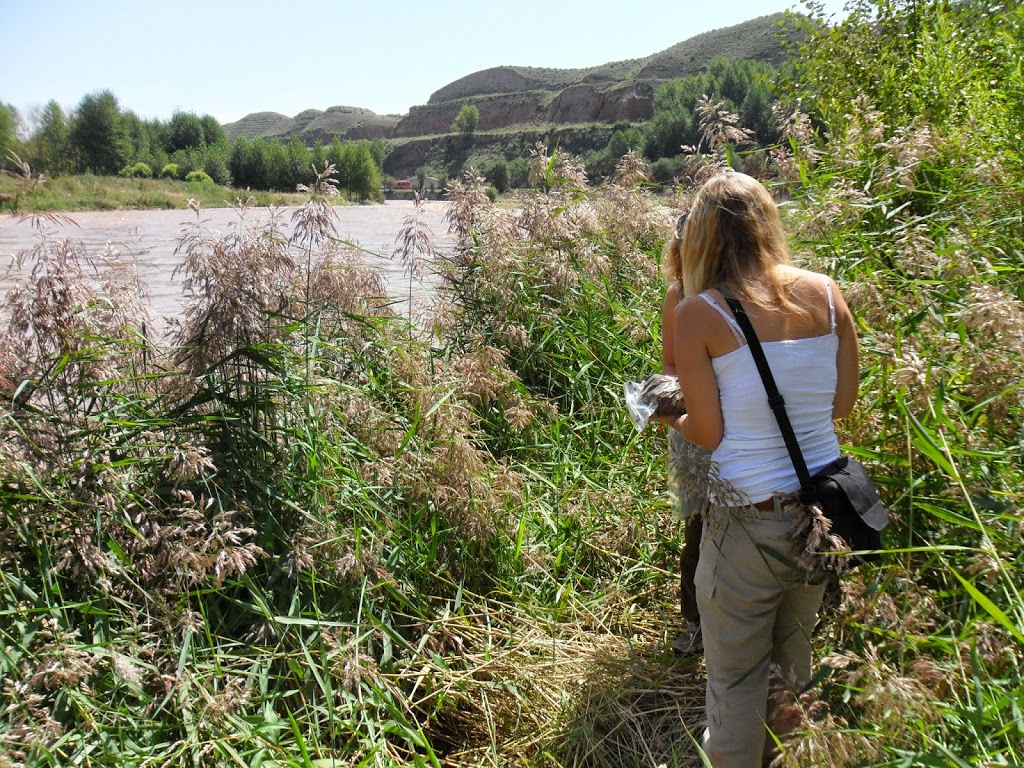 |
| Abi and I sampling the Yellow River close to Lanzhou |
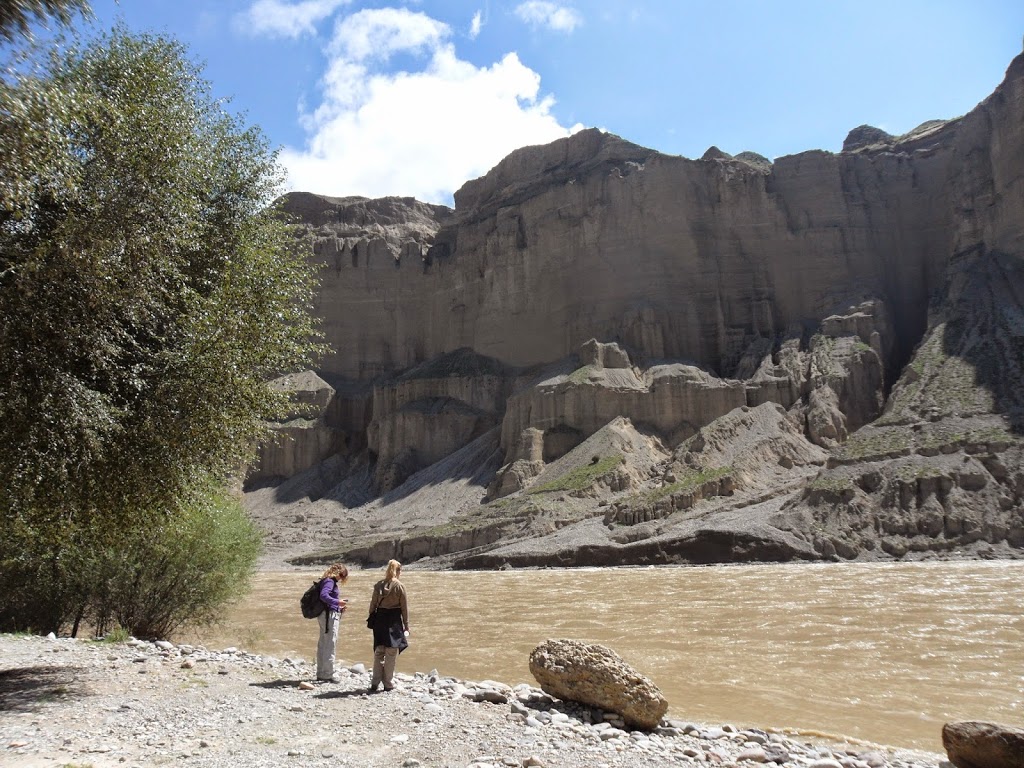 |
| Abi and I sampling the Yellow River in a deep river carved gorge. |
Where to sample was not the only important thing we had to consider, we also had to think about the effects of altitude. We were planning to go up to altitudes over 4500 m! This can have serious health implications for some people, and anything from a mild headache to fluid in your lungs. This was especially important for the drivers so they were given oxygen bags, although the effect of these was probably somewhat diminished by how much the drivers smoked. Almost everyone on the trip suffered in someway from altitude sickness, Tom described it as feeling hungover or having a cold. One of the students couldn’t move far without feeling dizzy.
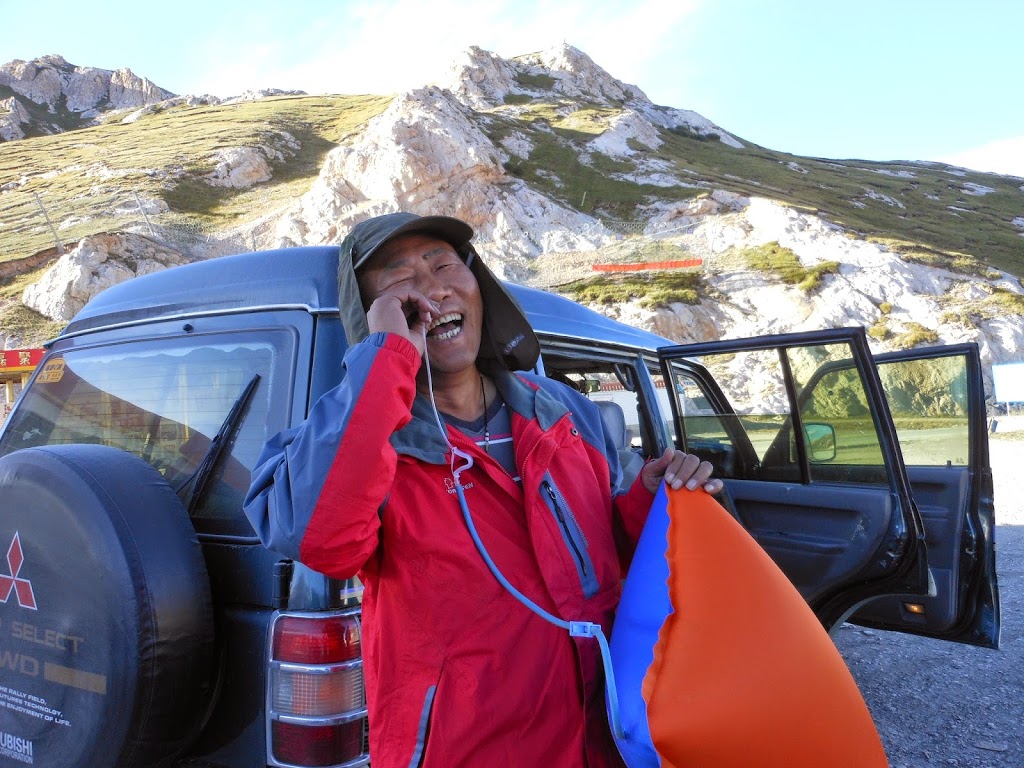 |
| Driver Lao Li using his oxygen bag |
The trip incorporated some really long drives, the first day we drove over 350 km, which took approximately 7 hours. Over the course of this part of the trip we drove 2200 km. The downside of this was being squashed up in a car in which the suspension felt like it had given up years and years ago. The upside was the amazing scenery and wildlife, the variety of landscapes was particularly impressive, and each day was very different from the last. While we were up very high we drove along wide valleys with high mountains, often snow capped. Another common feature of the landscape were the herds of yak that were grazing in the enormous open grasslands, often accompanied by wild donkeys. In one place I got the opportunity of a lifetime, a chance to herd yak on the Tibetan Plateau!
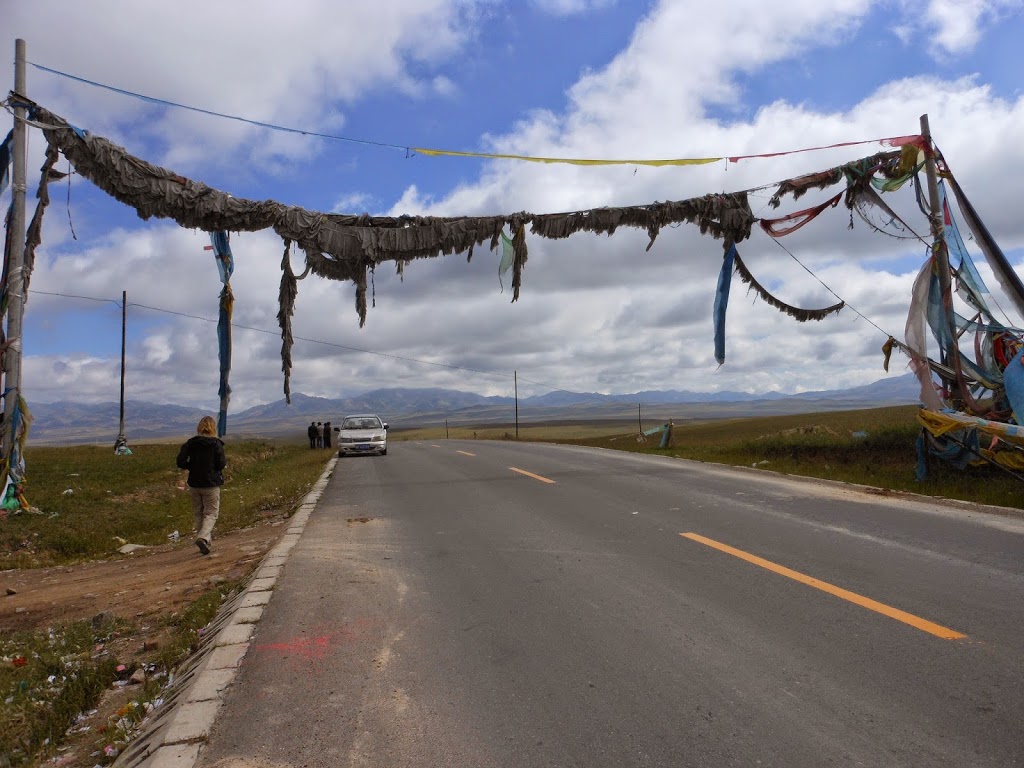 |
| Abigail Alderson stretching her legs walking in high wide valley |
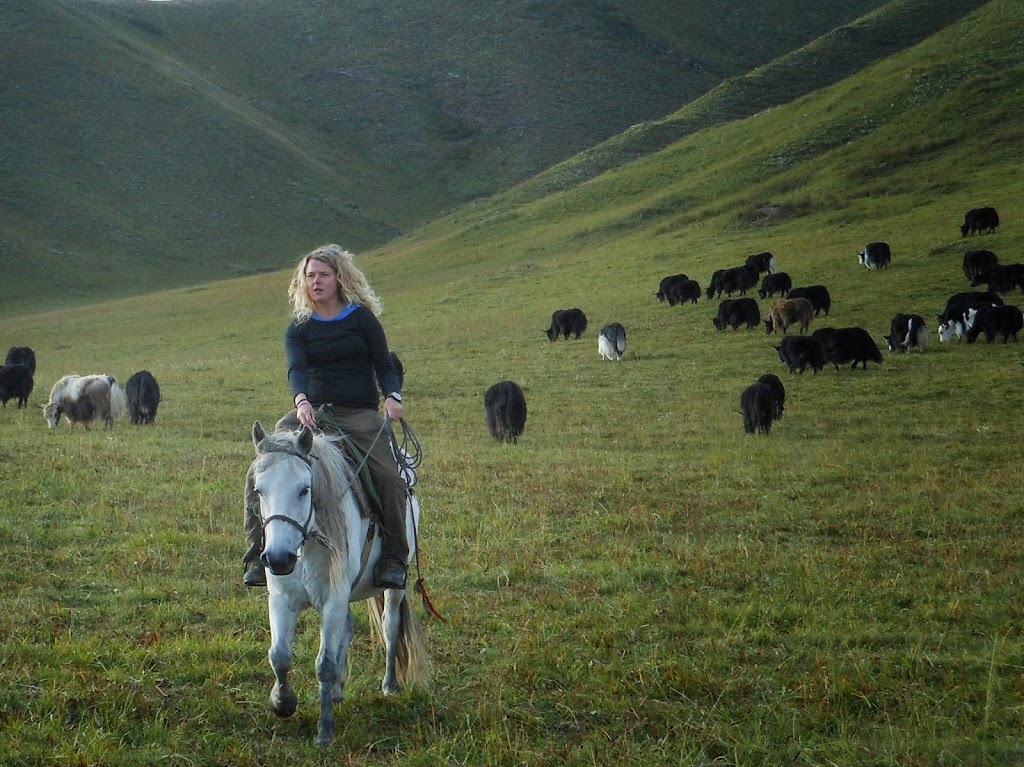 |
| Yak herding |
The wildlife we saw during the trip was incredible. At one point a wild Tibetan wolf ran past the back of our car. Tom managed a quick photo of it running away but I was far too slow! We also saw lots of pikas, which are small rabbit-like animals that live in burrows in the grassland. Large birds of prey were also spotted regularly. Zeng Lin, a PhD student helping us, said that you could also see bears; he had in fact seen one when he had spent two months doing fieldwork in Qinghai a few years ago!
The Tibetan people we met on our trip were really welcoming and friendly. We had the opportunity to have lunch in people’s homes, talk to monks, doctors and nomads.
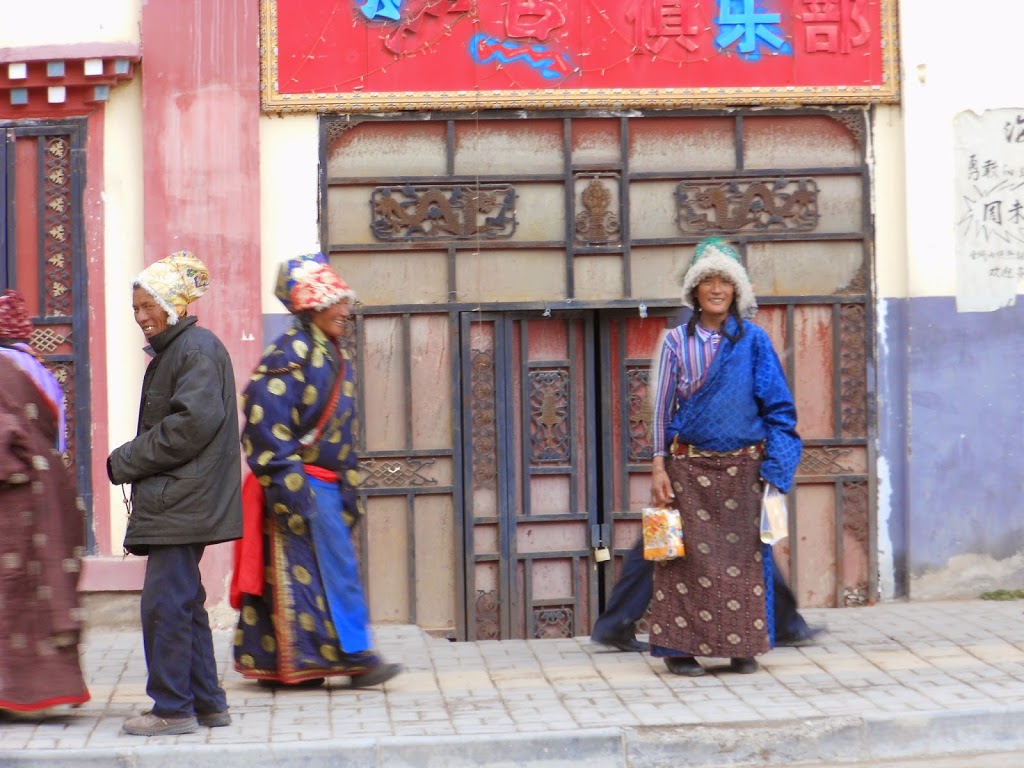 |
| Local people standing outside of food shop in Maodo |
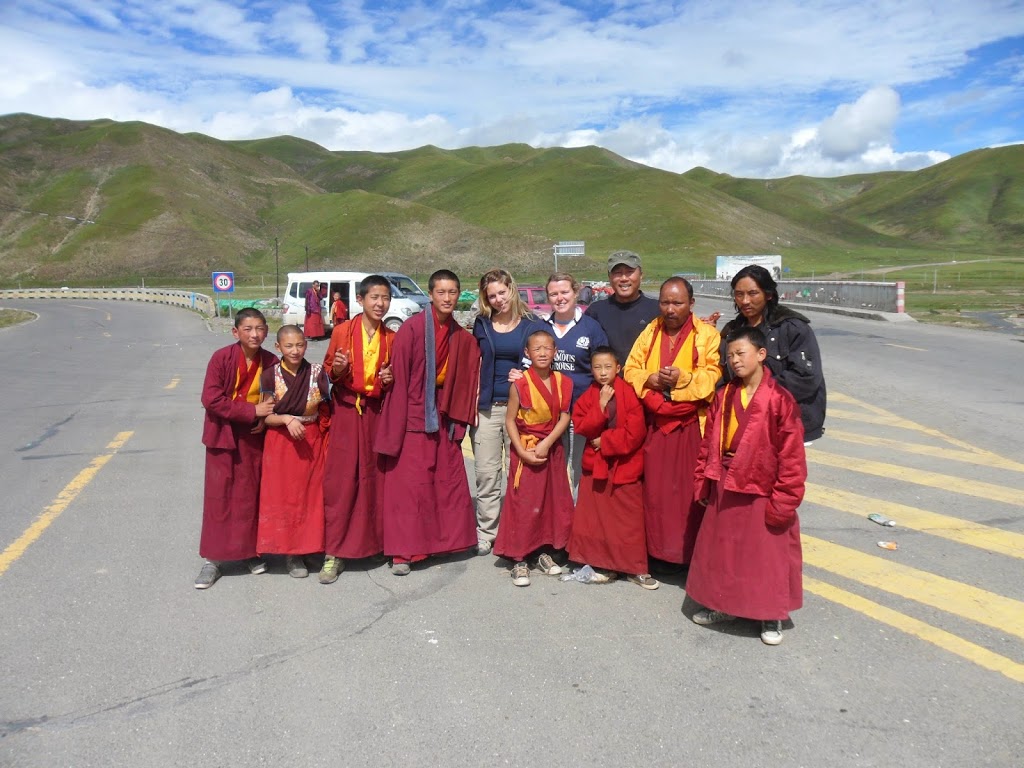 |
| Abi, Lao Li and I posing with monks. |
Nomads owned the first home we had lunch in. They spent their summer months on the grasslands looking after their herds of yak. We were made yak milk tea cooked on a fire fuelled by yak dung. To thank them for lunch we gave them gifts of notepads and pens to help their children with schooling as they are far away from schools during the summer.
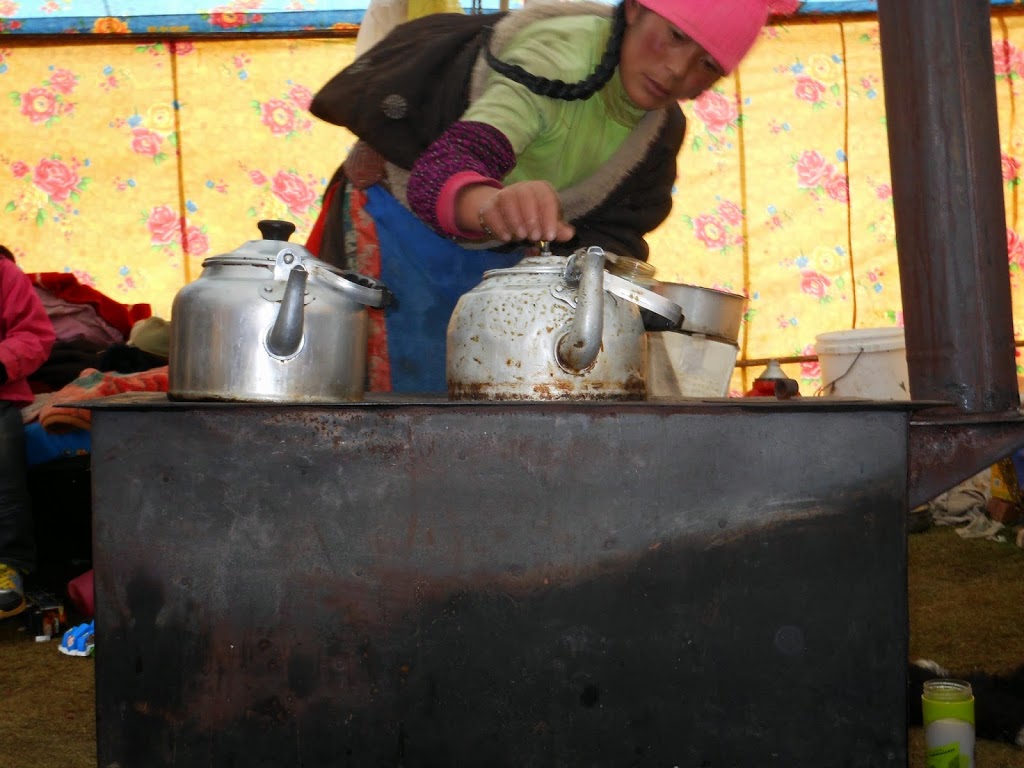 |
| Nomad lady making us yak milk tea |
On the trip we stayed at some really interesting towns, one of the most different was a town called Aba. In March 2012 there had been a serious protest by the monks and now the whole town was on lock down. They had had no Internet since March and there was a massive riot police presence. When I went my morning run, I was jogging beside fully armed men from the army who were also doing their morning exercises.
After collecting all the river samples we needed we headed back to Lanzhou so Tom and Abi could get their flights. I continued with two of the students (Hanzhi, Lai Fang) to Inner Mongolia to collect some sandstone samples from the Mu Us Desert. This sandstone is Cretaceous in age and underlies the Mu Us and potentially much of the Chinese Loess Plateau. There was a suggestion by some preliminary work that the sandstone may be one of the sources of the loess, however, this work was done on one sample so we collected a few more. The fieldtrip ended with the obligatory karaoke session in a bar in Xi’an before I got the train back to Lanzhou. Thank goodness there is no photo or video evidence of this!
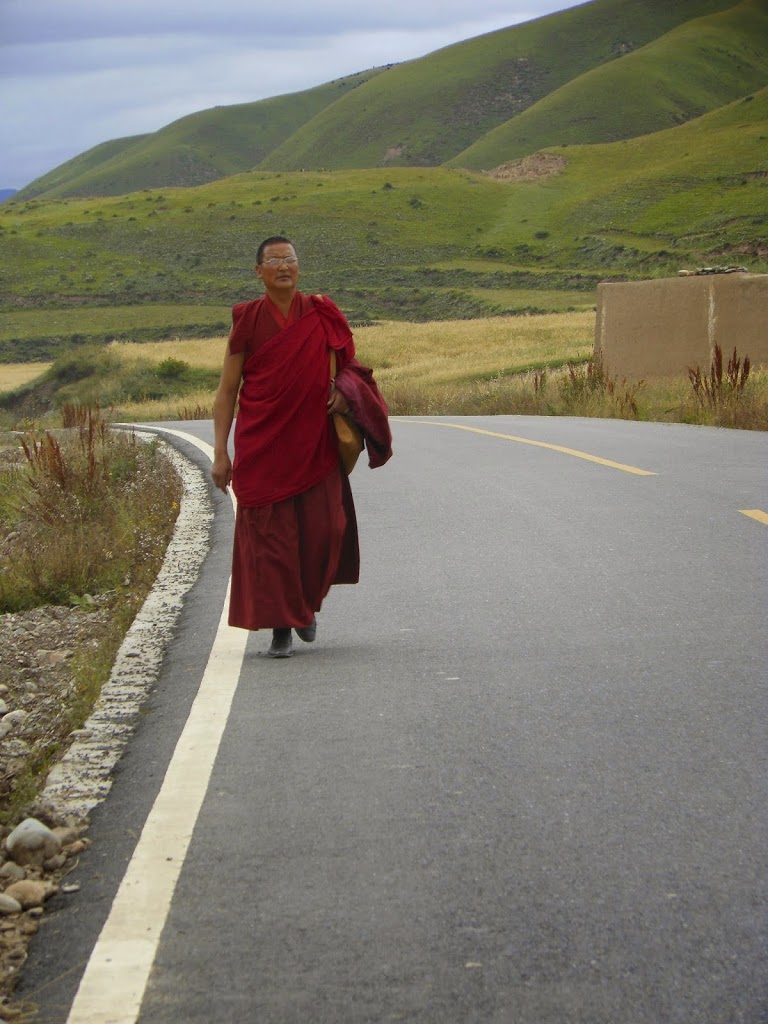 |
| Regular sight of monk walking along the side of the road |
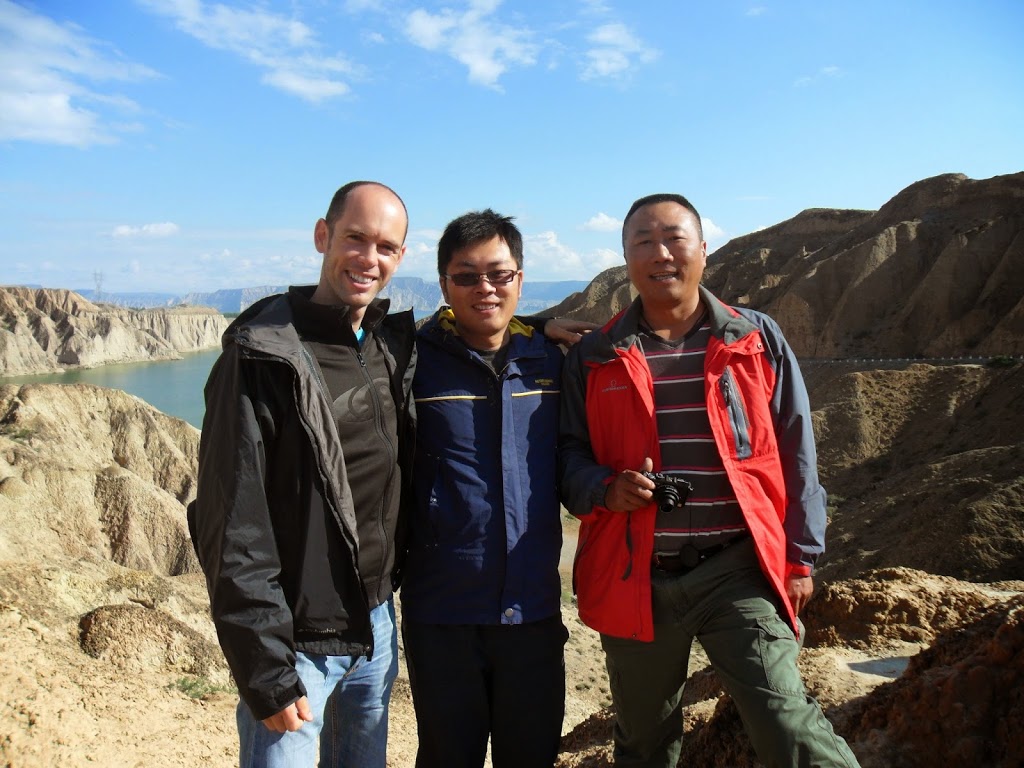 |
| Left to right, Tom Stevens, Zeng Lin (PhD student from Nanjing) and driver Lao Li. Some of the amazing variety of landscapes we saw on our travels. |
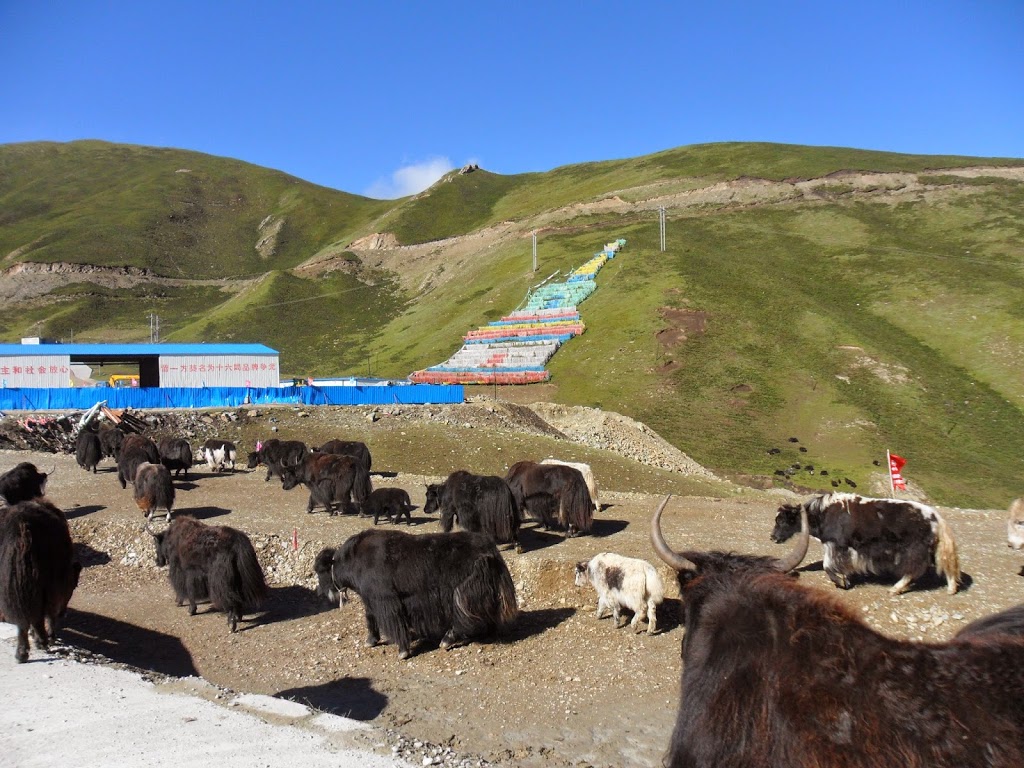 |
| Typical seen with Buddhist temple and yaks |
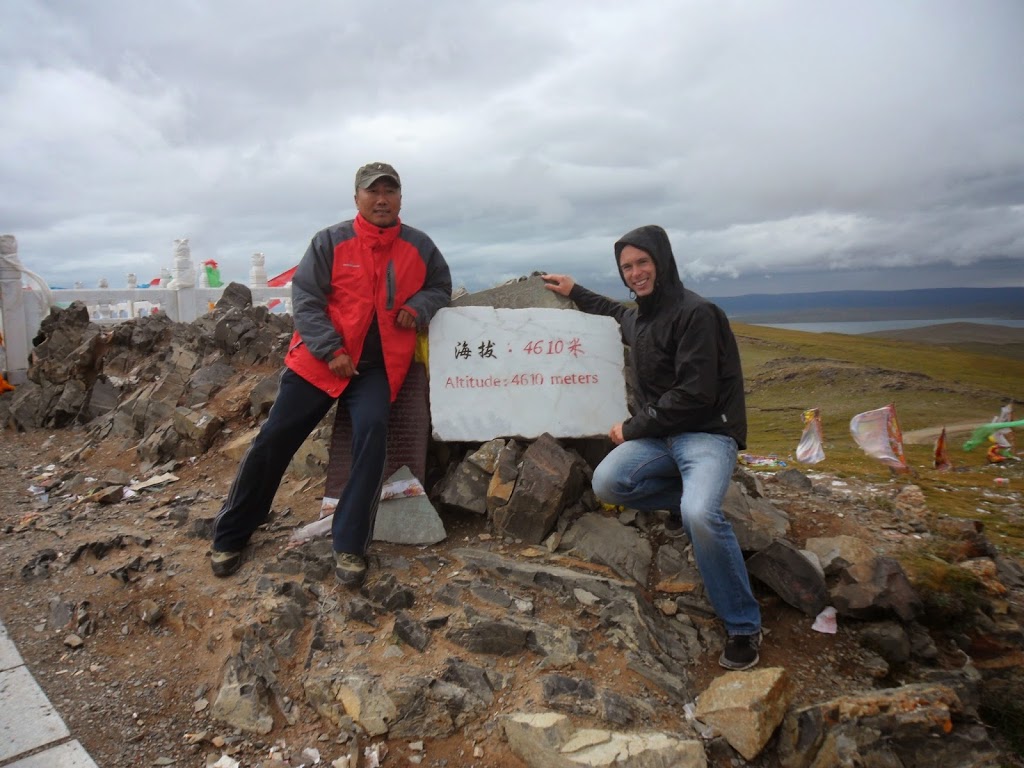 |
| Lao Li and Tom posing beside the altitude sign at the highest point of our journey |
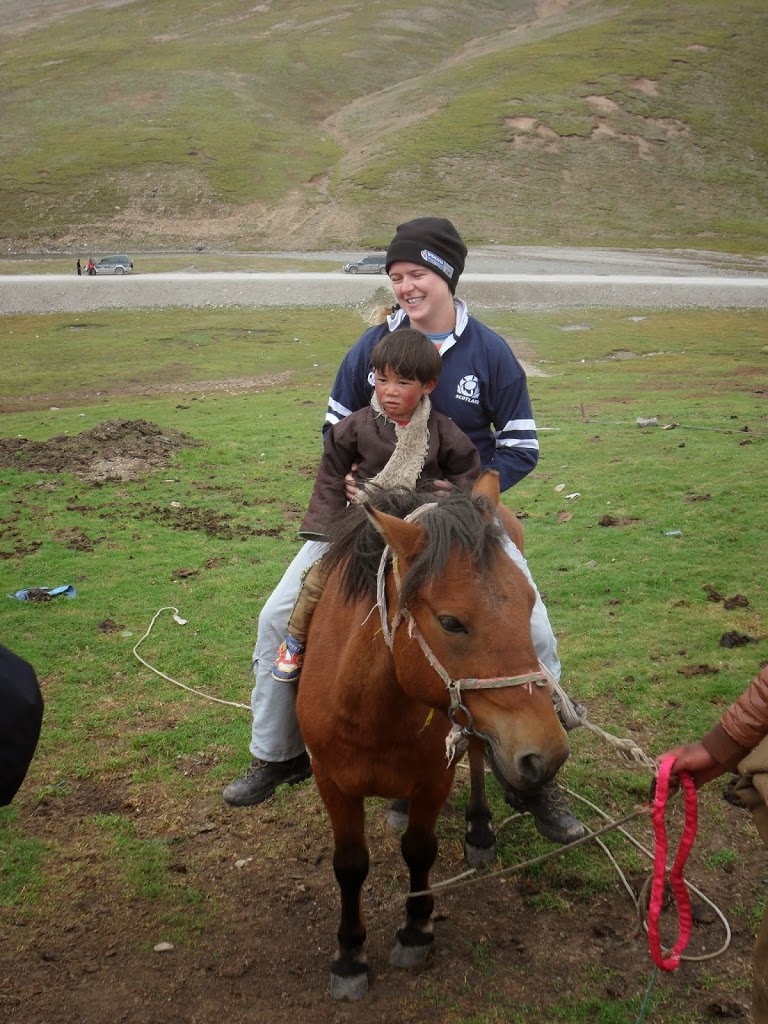 |
| Me trying to kidnap small very cute nomad child and patient pony… |
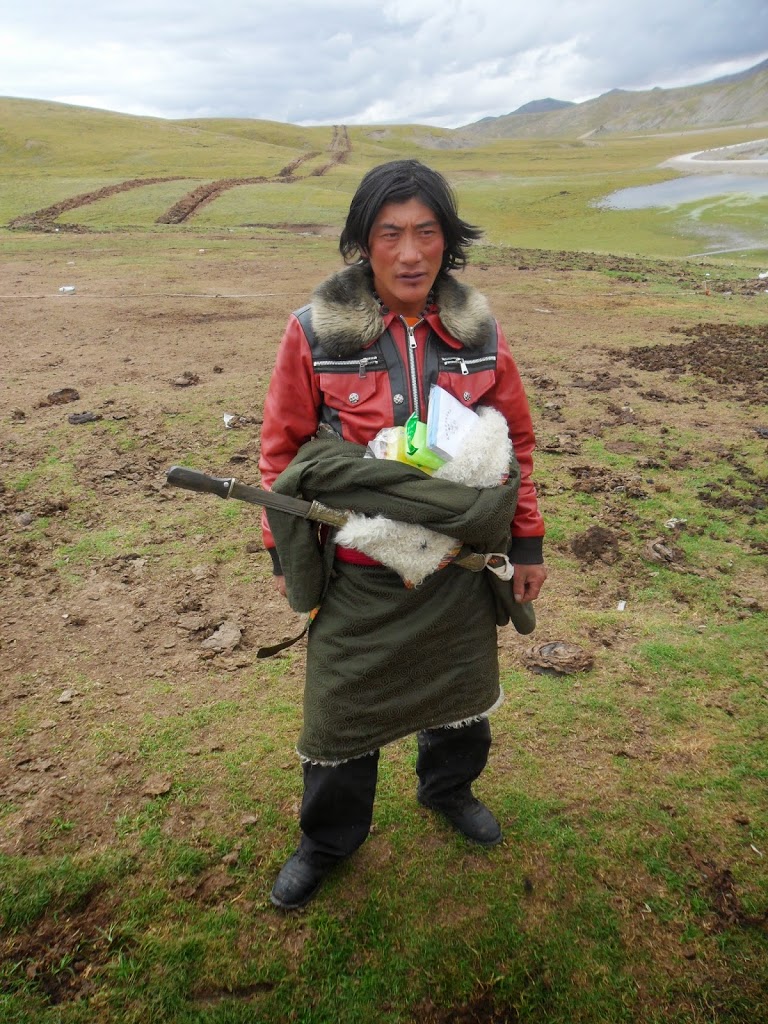 |
| Son of the nomads who invited us for lunch. |
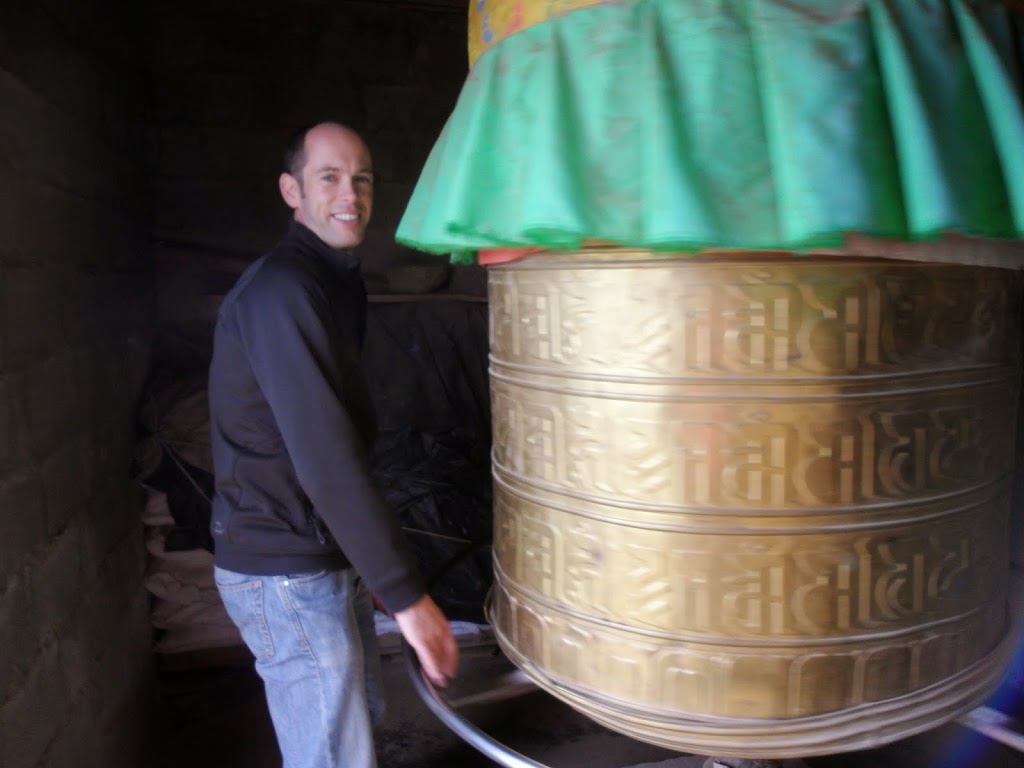 |
| Tom turning a prayer wheel in one of the monasteries we visited. |















![]() This work is licensed under a Creative Commons Attribution-NonCommercial-ShareAlike 4.0 International License.
This work is licensed under a Creative Commons Attribution-NonCommercial-ShareAlike 4.0 International License.